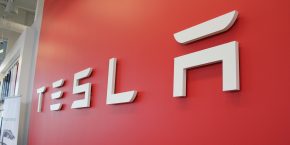

Earlier today, the German magazine Der Spiegel published excerpts from a new internal report on the Tesla Autopilot by the Federal Highway Research Institute of Germany’s Transport Ministry. The excerpts show a harsh critique of Tesla’s advanced driver assistance system (ADAS) and go as far as calling it a “erhebliche Verkehrsgefährdung”, which directly translates to a “significant traffic hazard”.
Interestingly, the main problem with the Ministry’s analysis appears to be that they are benchmarking the Autopilot as a self-driving system – something it is not. Tesla has now issued a thorough response to the report in an attempt to clear the air.
The excerpts of the report published in Spiegel included concerns that the sensors on Tesla vehicles don’t detect far back enough to perform lane changes. That’s partially true. Only some of the ultrasonic sensors of the Autopilot are rear-facing and they have a range of 16-ft, which is why drivers need to verify themselves if the way is clear before activating the automatic lane change.
That only becomes a concern if you consider the system to be self-driving, which again is not the case, but it seems to be how the German Ministry of Transport is benchmarking it.
If they want to test a self-driving car, maybe they should try the German-made Mercedes E-Class, which the company has been advertising as a ‘self-driving car’ despite only being equipped with ADAS like the Autopilot – though hardly comparable to the Tesla Autopilot:
Got my @WIRED Oct issue today. @MercedesBenz is still advertising the E-class as a 'self-driving car' https://t.co/yX9CBoJoS5 pic.twitter.com/9DyF9nFNAv
— Fred Lambert (@FredericLambert) September 28, 2016
The issues highlighted by the report only become concerns if the vehicle is advertised as a self-driving car, but Tesla insists that it has never been the case.
Here’s Tesla’s response to the report in full:
Autopilot is a suite of technologies that operate in conjunction with the human driver to make driving safer and less stressful. This is precisely how the term has been used for decades in aerospace: to denote a support system that operates under the direct supervision of a human pilot. In addition to using a common term in its proper context, we have always been clear with our customers that Autopilot is a drivers assistance system that requires the driver to pay attention at all times, similar to drivers assistance systems from other manufacturers. Just as in an airplane, when used properly, Autopilot reduces driver workload and provides an added layer of safety when compared to purely manual driving.
Tesla has always been clear that Autopilot is designed for use on highways or while in slow-moving traffic. Any vehicle can be misused. For example, no car prevents someone from driving at very high speeds on roads where that is not appropriate or from using cruise control on city streets. In contrast, Tesla has taken many steps to prevent a driver from using Autopilot improperly.
Tesla employs many safeguards to prevent Autopilot from being misused by the driver. Before enabling Autopilot, the driver first needs to agree to “keep your hands on the steering wheel at all times” and to always “maintain control and responsibility for your vehicle.” Subsequently, every time the driver activates Autopilot, he is shown a visual message reminding him to “keep your hands on the wheel” and “be prepared to take over at any time.” Further, when the system is in use, it continues to measure the amount of torque that the driver applies to the steering wheel and if insufficient torque is applied, it delivers an escalating series of visual and audio warnings again reminding the driver to place his hands on the wheel. If the driver repeatedly ignore those messages, then the driver will be locked out from using Autopilot during that trip. Tesla is not aware of safeguards as strong as these to prevent driver misuse in any other car on the road.
Tesla Autopilot always requires that the driver remain engaged and ready to take over at any time. To assist the driver, the Tesla clearly shows the driver which lane markings and vehicles are detected. To change lanes, the driver must first visually confirm it is safe to do so, just as he would when driving manually. He must then express his intention to change lanes by activating the turn signal while holding the steering wheel. Only then, and in response to a driver command certifying that the maneuver is safe, will the car change lanes.
Tesla’s Automatic Emergency Braking system is the state of the art in the industry and is capable of applying full braking. All AEB systems have inherent limitations that do not allow for every collision to be prevented, but the existence of AEB helps prevent a large number of collisions that otherwise would have occurred. Additionally, unlike other manufacturer’s AEB systems which do not improve with experience, Tesla’s system is capable of continually improving via over-the-air updates, using data collected by the Tesla fleet.
FTC: We use income earning auto affiliate links. More.




Comments